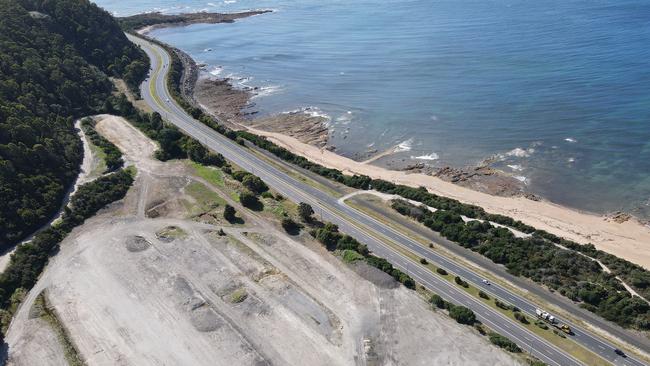Future Tasmania: New Marinus CEO launches defence of project
The new boss of Marinus Link has launched a spirited defence of the massive project, saying it will deliver cheaper power to everyday Australians, drastically reduce carbon emissions and create ample employment and investment in local communities. DETAILS >

News
Don't miss out on the headlines from News. Followed categories will be added to My News.
THE new boss of Marinus Link has launched a spirited defence of the massive project, saying it will deliver cheaper power to everyday Australians, drastically reduce carbon emissions and create ample employment and investment in local communities.
The $3b undersea interconnector, which will connect Tasmania with Victoria, will be the biggest infrastructure project in the state’s history.
Marinus Link CEO, Caroline Wykamp, said Australia’s shift to a low-carbon energy market would help the nation “adapt to the threat of climate change” and reduce the “severity of its impact on the community and economy”.
She said this transition would mean the ability to move power around the National Electricity Market and store surplus power at peak times would be more important than ever and would ensure energy customers received the most reliable and low cost service.
“That’s why we need Marinus Link,” she said. “This one project will deliver carbon savings equivalent to removing one million cars from our roads.”

The 1500MW, 345 km-long high voltage direct current electricity cable will run across Bass Strait, from Heybridge, east of Burnie, to Hazlewood in Victoria’s Latrobe Valley.
Construction is set to commence in two stages from early 2025. Stage one is expected to be completed and in service by 2028-29, while stage two will be completed and in service by 2030-31.
“Marinus Link will deliver significant employment and investment in the communities where we operate, and set up a pipeline of related industries for the future,” Ms Wykamp said.
“Our processes are weighted to ensure opportunities for local companies to be a part of Its delivery.”
Ms Wykamp said energy supply and demand were currently “evenly matched” in Tasmania, with the state using all the energy it produces.
“Demand for power in the state will increase in the future,” she said. “Tasmania is projected to grow by 79,000 people by 2033. There will be new industries and businesses, growth in our existing businesses and an uptake of electric vehicles.”

“With the existing Basslink interconnector fully utilised, we need to unlock access to new renewable generation. Without Marinus Link, the ability for our state to grow and prosper will be limited.
“Marinus Link will ensure we leverage our role as a national leader in renewable power, and pave the way for economic and population growth in the years ahead, while putting downward pressure on prices for Tasmanians.”
The new interconnector will also include optic fibre, which will provide 150 times the existing telecommunications capacity between Tasmania and Victoria.
Under a funding agreement announced in October last year, the Australian, Tasmanian and Victorian governments will contribute equally to a combined 20 per cent equity share in Marinus Link, with the remaining 80 per cent of project costs to be funded through a loan from the Commonwealth.
Professor Richard Eccleston, the director of the Tasmanian Policy Exchange at the University of Tasmania, said the “most complex policy challenge” facing the state was how best to use its hydro storages “which are easily the largest battery in Australia”.
“The question around Marinus Link, how it is funded and managed, and who pays, is complex and warrants a serious and informed public debate but, with the right model, there is potential for Marinus to deliver financial dividends to Tasmania while supporting the expansion of renewables on the mainland,” he said.




